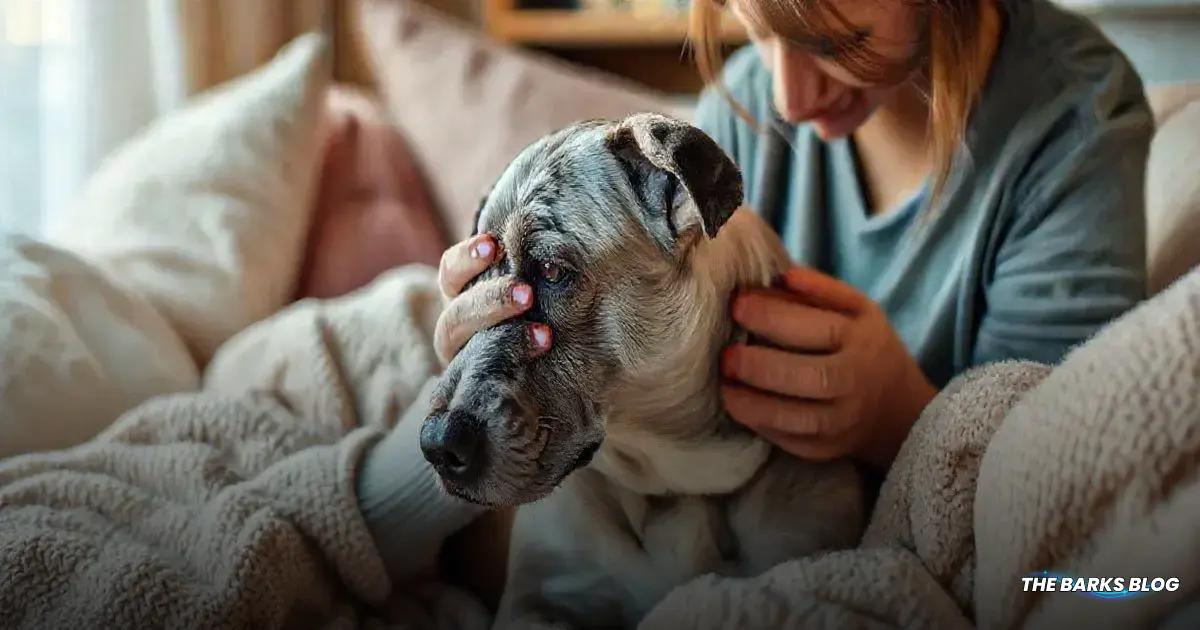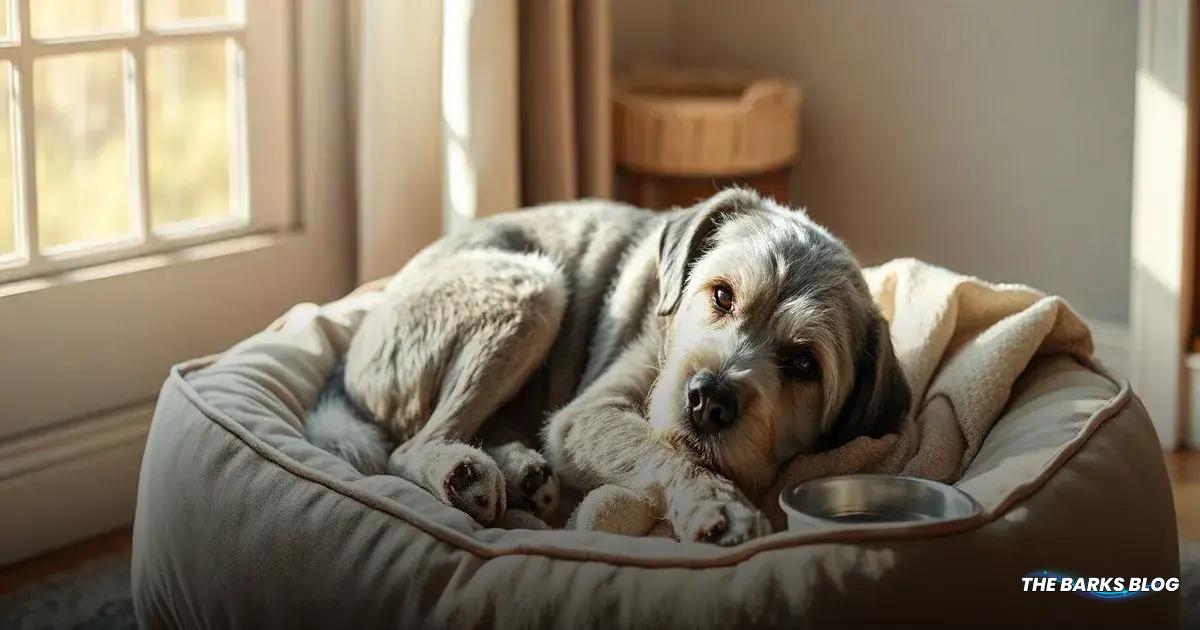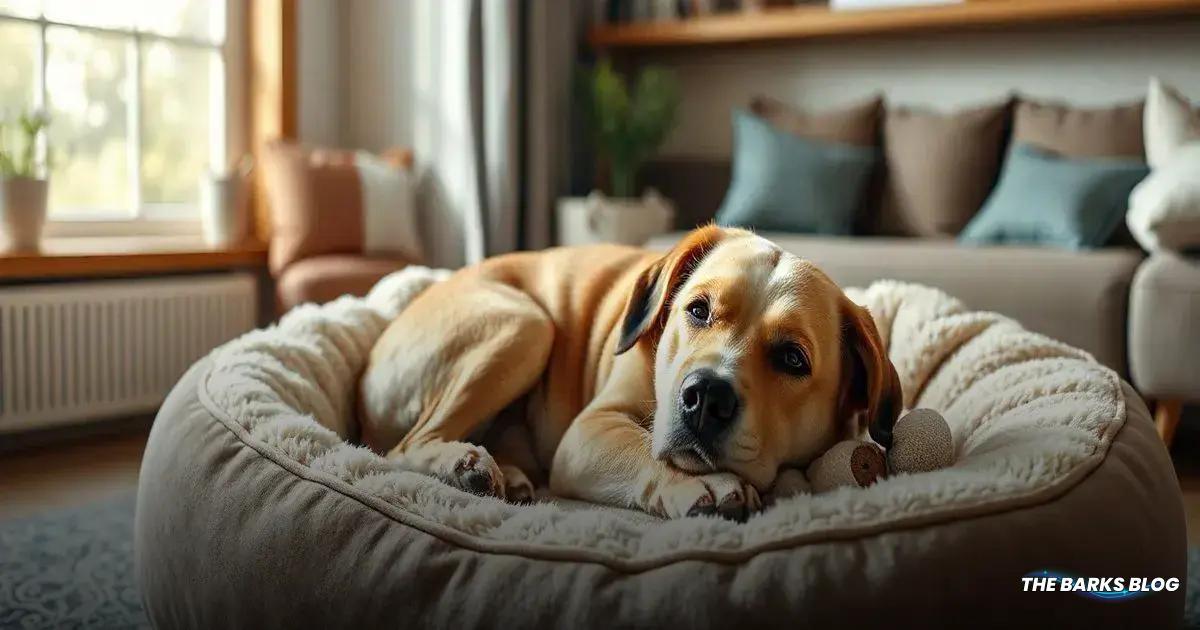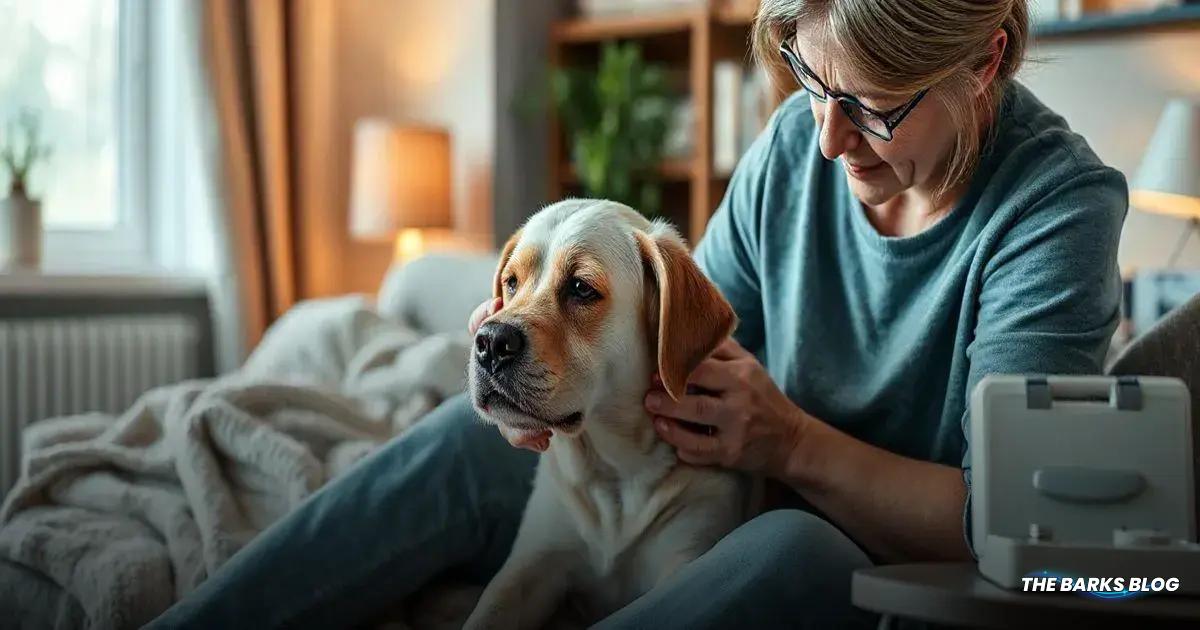Recognizing signs of pain in senior dogs is crucial for their health. Look for indicators such as difficulty moving, reluctance to exercise, changes in posture, increased irritability, excessive licking, and social withdrawal. To improve their comfort, provide orthopedic bedding, maintain a moderate exercise routine, and ensure regular veterinary visits. A tailored diet and pain management plan can greatly enhance their quality of life, allowing them to enjoy their later years with comfort and happiness.
As our furry friends age, recognizing the signs of pain in senior dogs is crucial. Some signs are obvious but others aren’t as clear – and it’s our job as pet parents to act when we detect any signs of pain in old dogs. Early detection can significantly improve pain management and enhance their quality of life.

When Is A Dog Considered Senior?
Determining when a dog is considered senior can vary significantly based on their breed and size. Generally speaking, smaller breeds like Chihuahuas or Pomeranians often live longer, typically between 12 to 18 years. In contrast, larger breeds such as Great Danes or St. Bernards have a shorter lifespan, usually ranging from 7 to 12 years.
As a rule of thumb, the ‘senior’ stage of a dog’s life is generally considered to be in the last quarter of their expected lifespan. This means that small dogs may be regarded as seniors around the age of 10, while giant breeds might reach this stage as early as 5 years old. Understanding when your dog is classified as senior is essential for monitoring their health and adapting their care accordingly.
| Breed Size | Weight | Senior Age Range |
| Small | Up to 25 lbs | 10 + |
| Medium | 25 – 55 lbs | 8 + |
| Large | 55 – 95 lbs | 6 + |
| Giant | Over 95 lbs | 5 + |

How Do Dogs Show Pain?
Dogs have a natural instinct to mask their pain and discomfort. In the wild, showing signs of pain can make them vulnerable to predators, a trait that has been passed down to domestic dogs. This survival instinct often leads them to hide their discomfort to avoid appearing weak.
Unlike humans, dogs cannot verbally express their pain, so they rely on body language and subtle cues to communicate their feelings. This can make it challenging for pet parents to recognize when their old dog is in pain, as the signs can be very subtle.
Common behaviors that may indicate pain include:
- Changes in Mobility: Difficulty walking, limping, or hesitating to jump or climb stairs can signal discomfort.
- Posture Changes: Dogs may adopt unusual positions, such as hunching their back or shifting their weight to avoid aggravating pain.
- Vocalizations: Increased whining, yelping, or groaning can indicate that a dog is experiencing discomfort.
- Behavioral Changes: A normally social dog may withdraw from interactions or become irritable and aggressive when in pain.
- Excessive Licking or Chewing: Dogs may lick or chew at specific areas where they feel pain, attempting to soothe the discomfort.
Being attentive to these signs and understanding your dog’s typical behavior is crucial for identifying pain and ensuring they receive the appropriate care.

12 Warning Signs Your Senior Dog is in Pain
Recognizing the signs of pain in senior dogs is vital for their well-being. Here are 12 common warning signs that your aging dog may be in pain:
1. Difficulty in Walking or Climbing
One of the most noticeable signs of an old dog in pain is a change in mobility. Look for signs such as limping, stiffness, or difficulty climbing stairs and jumping. These issues often stem from arthritis or other joint problems that are common in older dogs.
2. Reluctance to Exercise
If your once-active dog now seems disinterested in walks, playtime, or other physical activities they used to enjoy, it could be a sign that they are in discomfort. This can often stem from joint pain or muscle soreness.
3. Changes in Posture
Dogs in pain may adopt unusual postures to avoid aggravating their discomfort, such as hunching their back or holding their head lower than usual.
4. Increased Irritability or Aggression
Pain can cause even the gentlest dogs to become irritable or aggressive. If your normally friendly senior dog starts snapping or growling without an apparent reason, it could be a sign of pain.
5. Excessive Licking or Chewing
Dogs might lick or chew at a specific area that is causing them pain. This is a way for them to soothe the discomfort or try to heal the area.
6. Withdrawing from Everyone
If your dog starts avoiding social interactions, seeks solitude, or hides in unusual places, it could be a sign they are in pain. This withdrawal can be a coping mechanism to avoid movement or touch that might exacerbate their discomfort.
7. Panting
Excessive panting, especially when your dog hasn’t been exercising, can indicate they are in discomfort. It may be a way for dogs to cope with pain and stress.
8. Decreased Appetite or Difficulty Eating
A senior dog in pain may show a decreased appetite or difficulty eating. You might notice your dog dropping food or avoiding hard foods altogether.
9. Changes in Drinking Habits
Pain can affect a dog’s drinking habits. A dog in pain might drink less due to discomfort, leading to dehydration.
10. Increased Whining, Yelping, or Groaning
Increased vocalizations such as whining, yelping, or groaning are strong indicators that your senior dog may be in pain.
11. Restlessness
Pain can disrupt a dog’s normal sleep patterns, leading to noticeable restlessness. You might observe your senior dog frequently shifting positions or waking up often during the night.
12. Increased Sleeping
Conversely, some dogs might sleep more than usual due to lethargy caused by pain. If your senior dog is sleeping excessively, it could be a coping mechanism to avoid discomfort.
Being aware of these signs and monitoring your dog’s behavior can help you identify when they might be in pain and take appropriate action to ensure their comfort and well-being.

Ensuring Comfort in Senior Dogs
Providing comfort and support for a senior dog in pain involves regular monitoring and communication with your veterinarian. Here are some comprehensive tips to help manage your old dog’s pain and ensure their well-being:
Comfortable Bedding
Ensure your dog has a soft and supportive place to rest. Orthopedic beds are designed to support aging joints and alleviate pressure points, making them ideal for senior dogs. Look for beds with memory foam or cushioned support to provide maximum comfort. Keep the bedding clean and in a quiet, accessible location where your dog feels safe and relaxed.
Regular Exercise
Maintain a moderate exercise routine to keep joints flexible without overexerting your dog. Gentle activities such as short walks, swimming, or controlled play can help maintain muscle mass and joint mobility. Avoid high-impact activities that can strain your dog’s joints, such as sports that involve running or jumping. Tailor the exercise routine to your dog’s energy levels and physical capabilities, and always monitor them for signs of fatigue or discomfort.
Proper Diet
Ensure a balanced diet that supports joint health and overall well-being. High-quality, age-appropriate dog food formulated for senior dogs can provide the necessary nutrients. Consider incorporating foods rich in antioxidants, vitamins, and minerals to boost your dog’s immune system and overall health. Consult your vet for dietary recommendations tailored to your dog’s specific health conditions and nutritional needs.
Pain Management Medication
Work with your veterinarian to develop an effective pain management plan, which may include medications such as NSAIDs (non-steroidal anti-inflammatory drugs) or other pain relievers. Regularly review the effectiveness of the medication and adjust the dosage or type as needed under veterinary guidance.
Physical Therapy
Consider physical therapy as well as options such as massage, acupuncture, or laser therapy. These treatments can help reduce pain, improve mobility, and enhance your dog’s quality of life. Consult a certified animal rehabilitation therapist to design a customized therapy plan for your senior dog.
Environmental Modifications
Make your home more accessible for your senior dog by adding ramps or steps to help them navigate furniture or climb stairs. Ensure that food and water bowls are at a comfortable height. Provide non-slip mats or rugs to prevent falls on slippery floors.
Regular Veterinary Check-ups
Schedule regular veterinary check-ups to monitor your dog’s health and adjust their care plan as needed. Early detection and treatment of any health issues can prevent them from worsening and causing additional pain.
Monitor Behavior
Keep a close eye on your dog’s behavior and activity levels. Changes in appetite, sleep patterns, or social interactions can indicate pain or discomfort. Maintain a pain diary to track any changes and share this information with your veterinarian during check-ups.
By staying proactive and attentive to your senior dog’s needs, you can help them enjoy their golden years comfortably and happily. Regular check-ups and timely pain management are essential to keeping your senior dog pain-free and improving their quality of life. Your commitment to their care will make a significant difference in their overall well-being and happiness.

Comfortable Bedding
Ensuring your senior dog has a comfortable place to rest is crucial for their overall well-being. As dogs age, they may develop joint issues and arthritis, making it essential to provide them with bedding that offers adequate support.
Orthopedic beds are specifically designed to alleviate pressure points and support aging joints. These beds often feature memory foam or cushioned support, which conforms to your dog’s body, providing relief and comfort. Look for beds that are easy to clean, as maintaining a hygienic sleeping environment is important for your dog’s health.
When selecting a bed, consider the following factors:
- Size: Choose a bed that allows your dog to stretch out comfortably. Measure your dog while they are lying down to ensure the bed will accommodate their size.
- Material: Look for durable, high-quality materials that can withstand wear and tear. Waterproof or water-resistant covers can help protect against accidents.
- Location: Place the bed in a quiet, accessible area where your dog feels safe and relaxed. Avoid high-traffic areas that may disturb their rest.
- Temperature Regulation: Some beds are designed with temperature-regulating materials that keep your dog cool in the summer and warm in the winter, ensuring a comfortable sleeping environment year-round.
Providing your senior dog with a comfortable bed can significantly enhance their quality of life, helping them rest better and reducing discomfort associated with aging. Regularly check the condition of the bed and replace it as needed to ensure your dog always has a cozy place to sleep.

Regular Veterinary Check-ups
Regular veterinary check-ups are essential for maintaining your senior dog’s health and well-being. As dogs age, they become more susceptible to various health issues, and early detection can make a significant difference in managing these conditions effectively.
During these check-ups, your veterinarian will perform a thorough examination, which may include:
- Physical Examination: Assessing your dog’s overall health, including weight, coat condition, and mobility.
- Blood Tests: Checking for underlying health issues such as kidney or liver function, diabetes, and thyroid levels.
- Dental Check: Evaluating your dog’s dental health, as oral issues can lead to pain and other health complications.
- Vaccinations: Ensuring your dog is up-to-date on vaccinations to protect against preventable diseases.
- Parasite Control: Discussing prevention strategies for fleas, ticks, and worms, which can affect older dogs more severely.
It’s important to schedule these check-ups at least once or twice a year, depending on your dog’s age and health status. Your veterinarian can help you determine the appropriate frequency based on your dog’s specific needs.
In addition to routine check-ups, always consult your veterinarian if you notice any changes in your dog’s behavior, appetite, or activity levels. Keeping an open line of communication with your vet can help ensure your senior dog receives the best possible care, allowing them to enjoy their golden years with comfort and happiness.
Conclusion
Recognizing and addressing the signs of pain in senior dogs is crucial for their overall health and happiness. By being proactive and attentive to their needs, you can significantly enhance their quality of life.
Regular veterinary check-ups, comfortable bedding, proper diet, and appropriate pain management strategies are all essential components in ensuring your aging dog remains comfortable and well-cared for.
As a responsible pet parent, your commitment to understanding and supporting your senior dog’s needs will not only help them navigate the challenges of aging but also strengthen the bond you share.
Remember, early detection and intervention can make a world of difference, so stay vigilant and consult with your veterinarian whenever you have concerns about your furry companion’s well-being.
FAQ – Frequently Asked Questions about Senior Dog Care
What are the common signs that my senior dog is in pain?
Common signs include difficulty walking, reluctance to exercise, changes in posture, increased irritability, excessive licking, and withdrawal from social interactions.
How can I make my senior dog more comfortable at home?
Provide comfortable bedding, maintain a moderate exercise routine, ensure a proper diet, and make environmental modifications like adding ramps or non-slip mats.
How often should I take my senior dog to the vet?
It’s recommended to schedule veterinary check-ups at least once or twice a year for senior dogs, depending on their health status.
What type of bedding is best for senior dogs?
Orthopedic beds with memory foam or cushioned support are ideal, as they help alleviate pressure points and support aging joints.
How can I manage my senior dog’s pain?
Consult your veterinarian for a pain management plan, which may include medications, physical therapy, and lifestyle adjustments.
What dietary changes should I consider for my senior dog?
Provide high-quality, age-appropriate dog food that supports joint health and overall well-being, and consult your vet for specific dietary recommendations.




